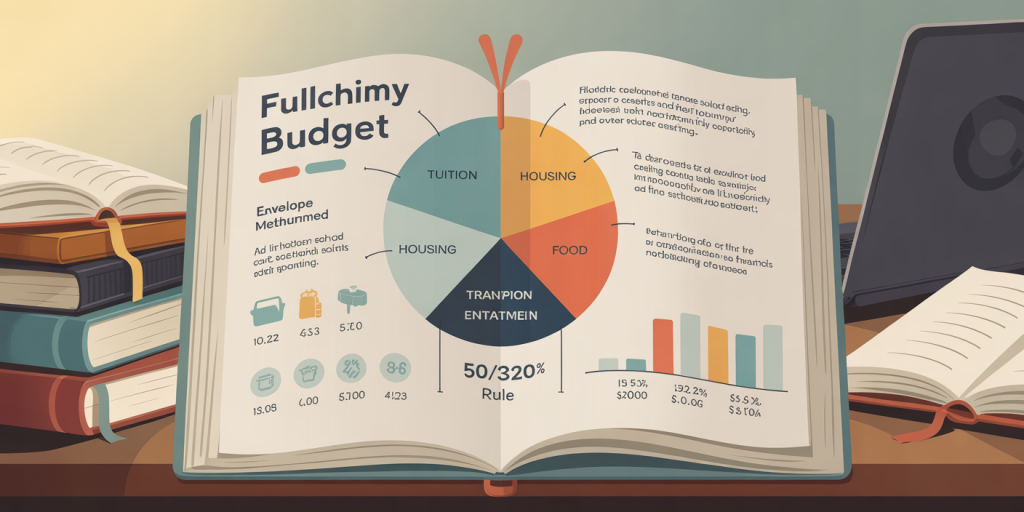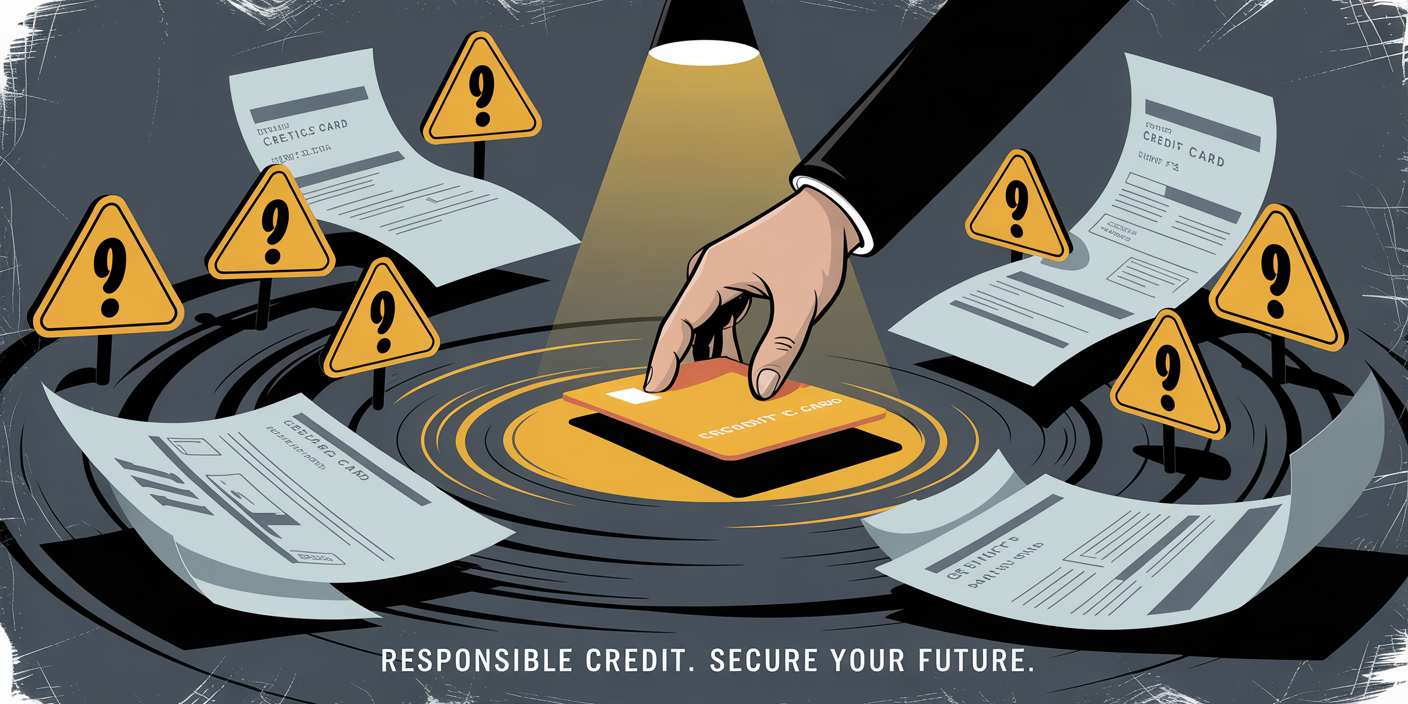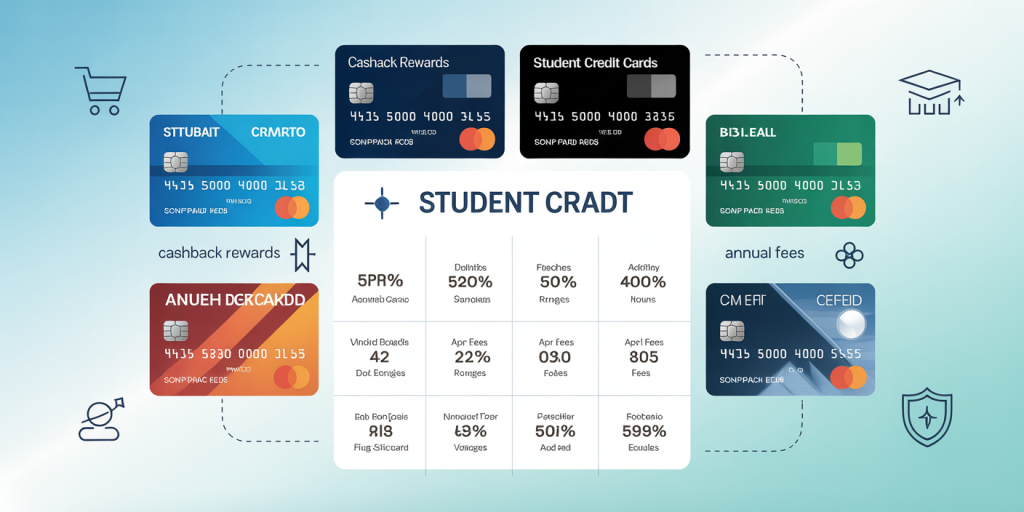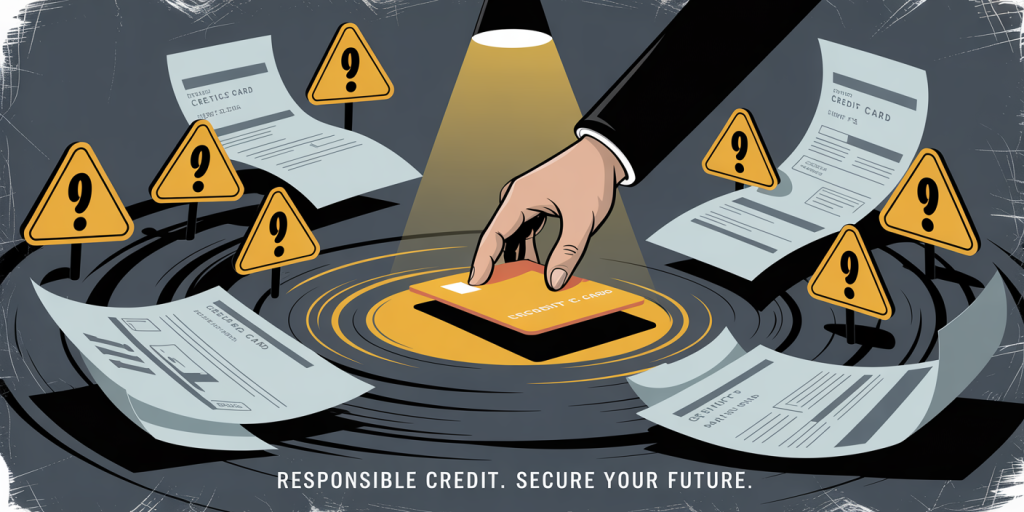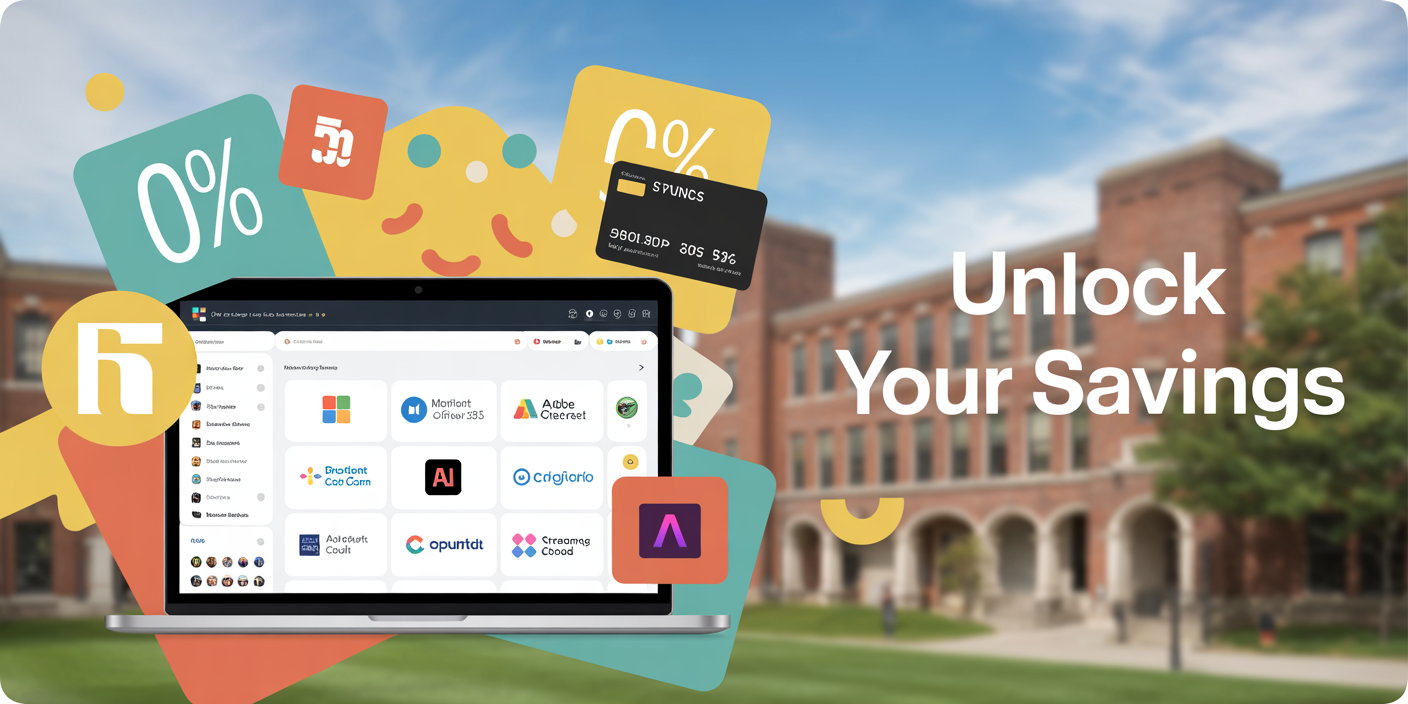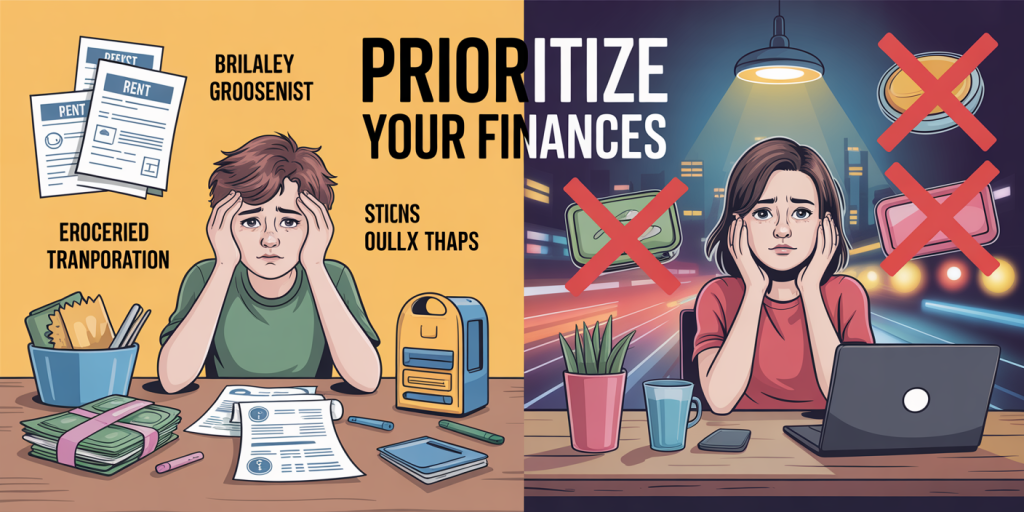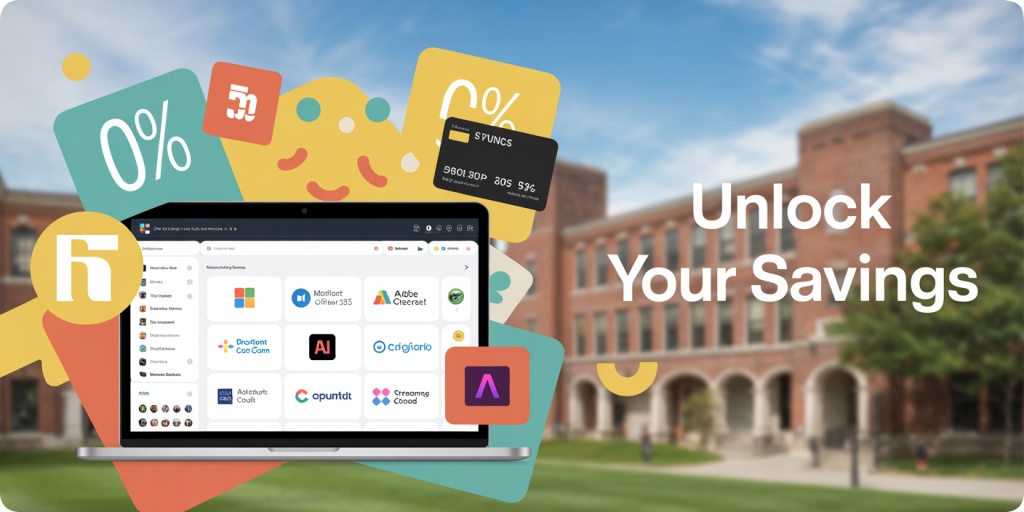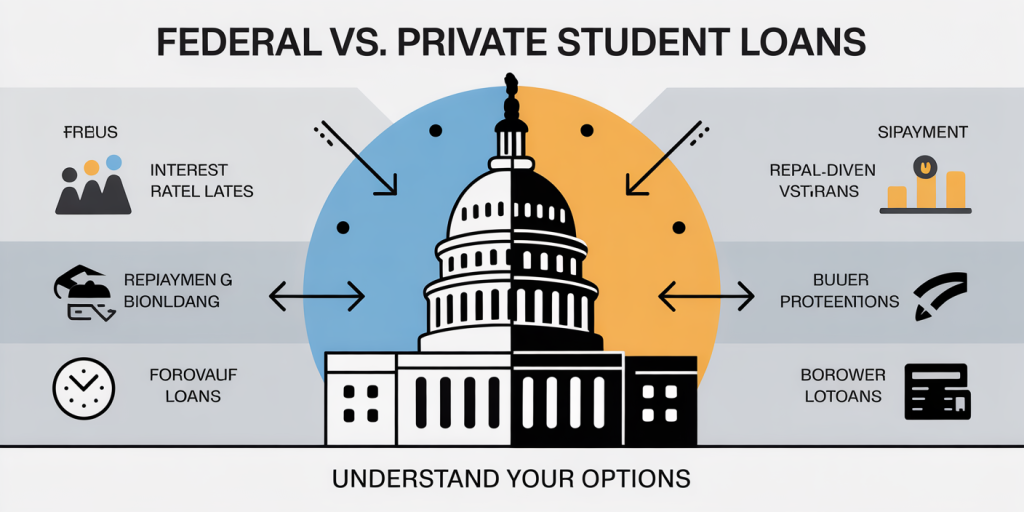In today’s competitive economic landscape, students and young professionals often face a critical decision when seeking work experience: should they opt for part-time jobs or internships? Both options offer valuable skill-building opportunities, but their financial benefits can significantly differ. Choosing the right path impacts not only immediate earnings but also long-term career prospects. This article explores the financial aspects of part-time jobs and internships, comparing their earnings, benefits, and potential influence on future income.

Understanding the Financial Landscape of Part-Time Jobs and Internships
Part-time jobs primarily emphasize immediate financial compensation, where individuals receive hourly wages or fixed salaries for work executed within a limited schedule, often alongside their studies. Common examples include retail assistant positions, food service roles, or administrative work. According to the U.S. Bureau of Labor Statistics (2023), the average hourly wage for part-time workers aged 16-24 is roughly $12.50, though this can vary widely by industry and location.
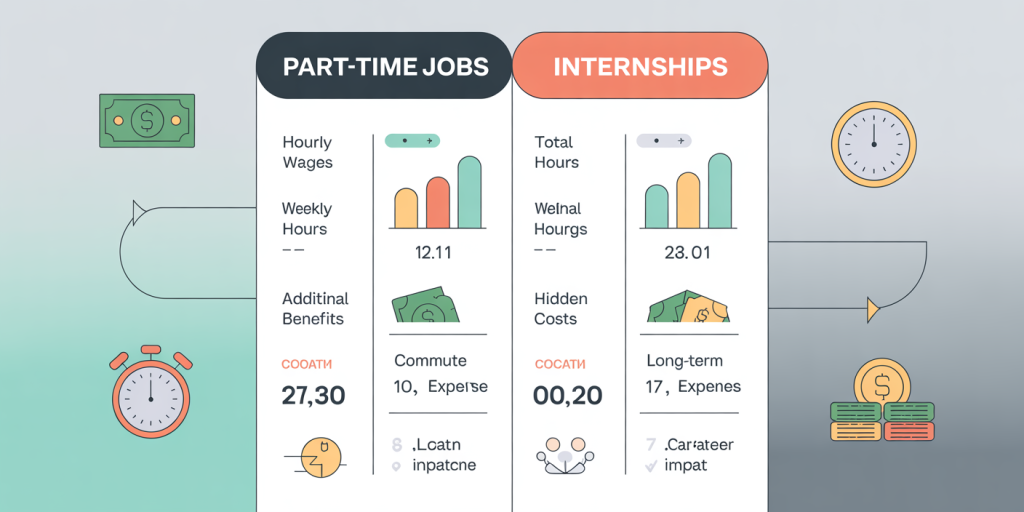
Internships, in contrast, focus more on providing relevant industry experience, networking opportunities, and potential pathways into full-time roles. While many internships are unpaid or offer modest stipends, the financial value they provide can extend beyond direct paychecks. A survey published by Internships.com (2022) indicates that around 60% of internships in the U.S. are paid, with an average hourly wage of $15 for paid internships. However, financial gains must be considered alongside the potential for skill development and job placement after graduation.
Comparing Immediate Earnings: Paychecks on the Table
When assessing immediate income, part-time jobs typically have the upper hand over internships. Because part-time positions are designed to supplement income, these roles are more likely to offer consistent and competitive wages. For example, a college student working 20 hours per week in a retail position earning $13 per hour can expect roughly $260 weekly before taxes. Over a 12-week summer break, this translates to over $3,000 in earnings.

On the other hand, unpaid or low-paid internships provide limited monetary compensation. Consider a marketing intern at a mid-sized company earning a stipend of $1,000 over a 12-week period or working unpaid to gain hands-on experience. Although the immediate financial benefits are minimal, interns may receive additional perks such as transportation stipends or free meals.
| Aspect | Part-Time Jobs | Internships |
|---|---|---|
| Average Hourly Wage | $12.50 (varies by sector) | $15 (for paid internships) |
| Typical Weekly Hours | 15-25 hours | 10-20 hours |
| Total Earnings (12 weeks) | ~$3,000 (at 20 hours/week, $12.50/hr) | $1,500 – $3,000 (for paid internships) or unpaid |
| Additional Benefits | Employee discounts, sometimes tips | Networking, mentorship, skill-building |
This comparison highlights that financially, part-time jobs offer steadier income streams. The predictability of paychecks can be crucial for students covering tuition, housing, or daily expenses.
Long-Term Financial Benefits: Gaining Value Beyond Immediate Pay
While part-time jobs provide consistent immediate earnings, internships potentially offer greater long-term financial rewards through experience accumulation and professional network development. According to a National Association of Colleges and Employers (NACE) report (2023), 56% of interns receive at least one job offer from their internship employer, and these offers often come with starting salaries 7-15% higher than the national average for new graduates.
A real-world example reflects this trend: a software engineering student interning at a tech startup paid $15 per hour but benefiting from mentorship and exposure to cutting-edge projects subsequently secured a full-time role with a $75,000 annual salary. Without the internship, their initial job prospects might have been limited to entry-level, lower-paying positions due to lack of applied experience.
In comparison, an individual who worked part-time jobs unrelated to their career goals might earn more in the short run but struggle to break into their desired industry without an internship on their resume. This suggests that, financially, internships may represent an investment that pays dividends later, despite limited upfront earnings.
Considering Hidden Costs and Benefits: Time, Expenses, and Skill Acquisition
An important financial consideration is the hidden costs associated with internships versus part-time jobs. Internships, especially unpaid or low-paid ones, may necessitate sacrifices like commuting expenses, parking fees, or relinquished earnings from other employment. According to a 2022 Princeton University study, unpaid internships can cost students an average of $3,300 per summer in forgone wages and expenses.
In contrast, part-time jobs typically cover their own associated costs because they offer sufficient pay to offset commuting and other expenses. For instance, a cashier working at a nearby supermarket may benefit from lower travel costs and even employee discounts.
However, from another perspective, internships provide intangible benefits that can enhance future earnings potential. The development of technical skills, soft skills such as communication and teamwork, and professional references can all accelerate career advancement. These non-monetary gains increase the likelihood of obtaining higher-paying positions post-graduation.
Case Studies: Financial Outcomes From Different Career Paths
To illustrate the financial implications of choosing part-time jobs or internships, consider two students:
Case Study 1: Emma, the Retail Worker Emma works 20 hours per week at a retail store earning $13 per hour during the academic year and full-time in the summer. Emma’s total annual earnings from this job sum to approximately $15,600 before taxes. However, because her role is unrelated to her passion for graphic design, she lacks relevant experience for creative agencies upon graduation, facing limited entry-level job offers in her field.
Case Study 2: Michael, the Marketing Intern Michael accepts an unpaid internship at a marketing firm over two summers, working 15 hours per week. Despite limited direct earnings (estimated at $0 to $1,000 in stipends), Michael leverages his internship experience into a full-time entry-level role paying $45,000 annually. Over five years, this career start leads to a salary trajectory surpassing $70,000, far exceeding initial part-time job earnings.
These cases underscore that although part-time jobs fill immediate financial needs, internships can offer greater rewards through career-specific experience and higher future income.
Financial Comparison Summary Table
| Factor | Part-Time Jobs | Internships |
|---|---|---|
| Immediate Earnings | High and consistent | Low or none |
| Career Relevance | Often unrelated | Directly relevant to field |
| Skill Development | Limited to job-specific tasks | Broader, industry-aligned |
| Long-Term Income Impact | Moderate if unrelated career-wise | Significant if converted to offers |
| Hidden Costs | Minimal, usually covered by wages | Potentially high (commute, living) |
| Networking Opportunities | Limited | Extensive |
| Job Offers Post-Experience | Moderate | High, especially in competitive industries |
Future Perspectives: The Financial Dynamics of Work Experience in a Changing Economy
As the labor market evolves, the financial evaluation of part-time jobs versus internships may shift. Remote internships and hybrid work models have begun to alleviate some costs by reducing commuting expenses, making unpaid or low-paid internships more accessible to a broader demographic.
Market research from the World Economic Forum (2023) suggests that industries emphasizing digital skills and technology increasingly favor candidates with internship experience over those with unrelated part-time job histories, forecasting that internships will yield stronger financial outcomes over time. Moreover, legislation trends toward increasing minimum wages and mandating paid internships may narrow the immediate income gap between the two options in coming years.
Education institutions and employers are beginning to recognize the challenges unpaid internships pose in financial equity. Programs offering stipends or hybrid models that combine project-based work with flexible schedules help to maximize both financial gains and experiential learning. Students may find hybrid models combining part-time work and internships most financially fruitful.
Investing strategically in internships aligned with career goals, supplemented by part-time jobs covering essential expenses, may optimize both short- and long-term financial well-being.
In conclusion, a clear financial comparison reveals that while part-time jobs provide steady and immediate income, internships often offer greater financial benefits in the long run through enhanced career opportunities and higher salaries post-graduation. Each individual’s circumstances and goals should guide their choice, but understanding the financial trade-offs enables informed decision-making to maximize both present needs and future earning potential.


